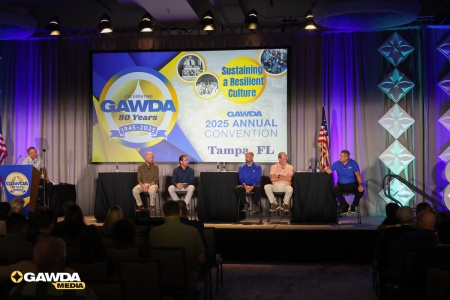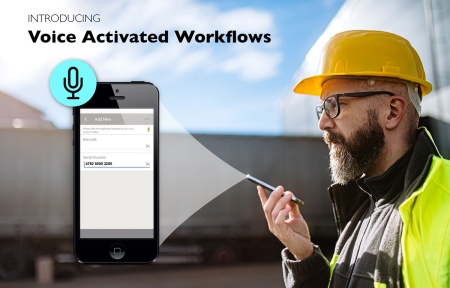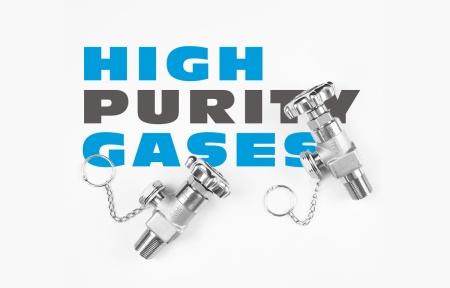BY TOM BADSTUBNER, MARILYN DEMPSEY, MICHAEL DODD, RICK SCHWEITZER, AND STEVE GUGLIELMO
GAWDA’s Consultants discuss their work on regulatory committees and documentation of lessons learned and best practices in their effort to benefit all GAWDA members.
The GAWDA Consultant Program is a GAWDA member benefit that is included as part of your member dues to the association. It is consistently rated as one of the most valuable member benefits that GAWDA provides. Between the four of them, GAWDA’s consultants bring more than 100 years of industry-specific experience to the association.
Following the forward-looking regulatory column in the Q1 Issue of Welding & Gases Today, this issue we focused more on ongoing process improvements that the consultants and committees continue to implement in their quest to help make GAWDA members safer and more compliant.
Thank you to Tom Badstubner, GAWDA’s FDA and Medical Gases Consultant, Marilyn Dempsey, DHS, EPA and OSHA Consultant, Mike Dodd, DOT Consultant, and Rick Schweitzer, Government Affairs and Human Resources Consultant, for lending their time and expertise to discuss these important topics. The following is a lightly edited transcript of that conversation.
WGT: Is there anything time sensitive or regulation-wise that you’d like to highlight before the SMC?
Mike Dodd: From a DOT standpoint, the only one that comes before the next magazine is the reminder to do their HAZMAT registration by June 30th.
WGT: How often does that happen?
Mike: It’s done 1, 2, or 3 years at a time. So, it depends on where they stand in their schedule, but it is always due June 30th.
Rick Schweitzer: On the Government Affairs side, the Florida Department of Business & Professional Regulation has CGMP for medical gases and there have been a number of companies that have run into enforcement problems with that agency doing business in Florida. The regulations are difficult to understand, and the licensing requirements, not just for the sellers, but also for their customers, are difficult to understand. There are also a lot of administrative issues that have come up with how to document deliveries. Tom did a tremendous job in organizing a working group of about a dozen different companies. We sent a letter to Walter Copeland, who is the director of the agency in Florida, then we had a virtual meeting with him a couple weeks ago and it was very well received. I am hopeful that we will get a great deal of clarity on this and provide some certainty for members on how they go about documenting their sales. We’re trying to get all of what we think we agreed to in writing so we can put that out to members. We’re in the follow up part to that meeting.
Tom Badstubner: Thank you, Rick. This project in Florida is a great example of GAWDA members working together to make a difference in their local area. All the participants, including our friends at CGA, collaborated to effectively communicate with the Florida Department of Business Regulation.
I would like to highlight a change in the FDA CARES Act reporting. The FDA portal to receive our annual CARES reports has been completely revised. If you are having any challenges in submitting your CARES report, please let me know. We can help.
Also, the new CARES reporting “deadlines” have been revised. You have until August 5, 2024, to submit your 2023 medical gas release information. Beginning in 2025, the annual CARES reporting deadline will be March 31 of the following year. (E.g., for the 2024 reporting year, the deadline is 3/31/2025.)
Marilyn: I helped a member company with a risk management program about two years ago. Finally, last month, the EPA conducted their initial inspection of the facility and audited the program; however, it was a very short audit/inspection. Only four hours. The EPA brought two inspectors and two government contractors; they went through a checklist then left. The company said it was like going through a four-hour hurricane
A company, who supplies this company, also had an EPA inspection and it took the supplier company a year to answer all the questions that EPA posed. So, the EPA is active in our industry. A bit slow to respond, but definitely assertive.
WGT: One of the things I wanted to talk about was this new feature in the monthly Safety Organizers, which is the Lessons Learned column. I think that is a great addition. Can you give me some background behind the idea and, as you’ve been getting these lessons from members, has there been anything that has surprised any of you?
Mike: The Safety Committee has been working on lots of things over the past few years. We’ve updated our topics that we put out and kept those current. And then we started a program where we are doing pictograms. We wanted one simple page pictograms, and we’ve been doing that for a year or two, now.
This year we wanted to add something else, called Lessons Learned. It is something that has happened to one of our members and we sanitize it, so no one knows who the member was, of course. Basically, it’s something that’s happened that we want to explain what happened, what we learned from it, and how do we prevent it in the future?
We started this several years ago, and we called it incident sharing, and we didn’t get a whole lot of participation in that. That’s understandable. People don’t like sharing things that happened to them. At least not everybody does. Some have been good with this. The biggest example of lessons learned, that really shook this industry up a number of years ago was the incident that A-OX shared. That broke the mold a little bit. If you get a company as big as A-OX willing to share something like that, laying themselves all out on the table like they did, I think it got a lot of other people thinking they could do that as well.
We’re not so much looking for those great big things like that, it’s the little things in life that tend to get us. Our committee members typically will know of an incident, and we’ll talk about something that happened. And we are trying to keep it simple. One page, two pages tops. We thought we’d be able to publish one of these once a month in the Safety Organizer. It’s all about keeping someone else from having a problem that others have had.
WGT: If members have something they would be willing to share are you soliciting these?
Mike: Anybody reading this article, if they’ve got a lesson they’d love to share with us, we’d love to hear it. We’re doing things that we know about on our own, but if anyone wants to share a topic, please get ahold of someone in the committee or one of the consultants. Trust me, we’ll keep it very sanitized, no one will know who it was, unless you want your name associated with the story.
WGT: You mentioned the infographics. How many are you up to now?
Marilyn Dempsey: We have revised probably 95% of all of the safety practices and 40% now have infographics. These infographics/pictograms are one-page visual aids that can be posted as a quick safety reminder.
WGT: CGA does a really good job doing something similar where they make those safety posters. How do you want the members to use them?
Mike: The idea is they print them off as big as they want and put them on the employee bulletin board. Those CGA posters are great big posters, and they work great behind the counter, out on the dock, inside the plant. We are focusing more on the employee bulletin board.
Tom: Yes, I agree that the CGA Safety Posters are a great resource. There are eight posters aimed at the end user (Medical Oxygen Safety, Flammable Gas Safety, Liquid Nitrogen Safety, Carbon Dioxide Safety, Dry Ice Safety, etc.) There are also eleven industrial posters aimed at explaining basic safety concepts to those new to handling compressed gases and related equipment (Sleeping Giant, Nesting Cylinders, Gas Separation, Confined Spaces, etc.) See https://www.cganet.com/resources/safety-posters/
WGT: Tom, you’ve also been covering the Medical Gas SOP Program in the Safety Organizers. Can you discuss that?
Tom: The GAWDA Medical Gas SOP Program is updated whenever there is a change in FDA enforcement or a member requests a process improvement. In addition, we formally reissue the entire set of procedures each year. You can get a fresh set of procedures customized for your exact needs in PDF format. If you have not updated your SOPs this year, please let me know. We can get the latest SOP document set to you.
WGT: Speaking of the working groups and coalitions, Rick, Rich Gottwald wrote an article for Q1 talking about the CO2 Solutions Coalition. It got me so interested that I interviewed him for the March GAWDA TV episode. GAWDA is a partner in this. From your perspective can you tell me about this CO2 Solutions Coalition?
Rick: It is an educational coalition. We are trying to avoid the law of unintended consequences. The idea of sequestering CO2 as a way to decarbonize the economy can have consequences for users of carbon dioxide, like the beverage industry, food industry and many other users. We want to make sure that there is a meaningful supply available, and that Congress and the federal agencies don’t come up with a “climate change solution” that’s going to negatively affect the availability of CO2. It’s a process of putting together informational material, which has been done, and then having the ongoing series of meetings with Congressional staff members and agency personnel to educate them on how CO2 is used in the economy.
WGT: Mike, in the January Safety Organizer, you wrote about the Drug and Alcohol Clearinghouse, which I know has been a major issue since it was launched. Did something happen with that or was it more of a best practices reminder?
Mike: That was just a best practices reminder. It’s amazing, you know Rick and I have been talking about the Clearinghouse now for about four if not five years. And yet, just before this call, I was talking to a new member who didn’t know a lot about it. That’s the reason why we do a lot of repeat topics. We’ve got some people that understand and jump on board, but we’ve also got some people that we have to keep reminding for them to do something about that. We do reminders on an ongoing basis.
WGT: Last year, there were more than 700 downloads of the Sample Safety Practices from the GAWDA Members-Only page, compared to only 522 in 2022. Are you seeing a similar uptick in calls or utilization from members or is it still hovering around the same 1/3 of members that it’s always been?
Marilyn: The total number of members contacting me isn’t the entire membership, but it is increasing. In 2023, 59% of distributors engaged with the GAWDA Consultants.
As far as frequency of calls, from Thanksgiving to Christmas the number of contacts drop off, but once the New Year begins, the calls pick up – especially since the first quarter of the year is compliance report season!
Mike: I know Tom and I have talked about it often, it’s amazing the small % of members that talk to the consultant. Of all the members that have paid their dues, we only get 25-30% that contact us on any type of basis.
WGT: In their GAWDA TV Segments, Colleen Kohler and Scott Myran referred to “power users” or people who really lean on the consultants a lot. Is that something you’ve noticed?
Mike: The ones that figure out what we are, who we are and what we do for them, they love it! We just have never figured out how to contact the rest of those who never have contacted us. They’d learn to love us as well.
Marilyn: The companies who do use us, call us fairly regularly because they realize they can ask us a regulatory question instead of having to research the answer themselves.
Tom: Yes, it is so much smoother to reach out to your consultants before an inspector arrives. Nevertheless, we are happy to help at any time.
WGT: In addition to the Safety Calls and being present at the National Meetings, you also host two Compliance Seminars each year and are present at the Regional Meetings. Do you feel that these more intimate settings, where it’s 80-100 people, are better for interacting with other people than the national meetings?
Mike: The national meetings everyone comes over and says hi. We get to make new friendships. We get to introduce ourselves to new people as they’re walking around. But yes, when you get down to the seminars and webinars that we do it gets to be more one-on-one and more personal. There’s a lot more to learn at those. They get to interact if they come in person with the other members that are there. I think there’s more work done at individual webinars and seminars, as opposed to the conversational stuff you see at the national meetings.
Marilyn: They both serve different functions. To tie into what Mike said, when someone physically attends one of the compliance seminars there is a sharing of experiences. These folks get to share and hear about solutions that they could use. Talk about lessons learned!
Rick: The national meetings, there are more distractions there. People come up to the booth and say hi, but it’s less likely we’ll get involved with longer conversations on substantive issues. The smaller the meeting, and certainly for those who are compliance targeted, you’re more likely to be able to break through that barrier with members who haven’t contacted the consultants otherwise.
Tom: Completely agree. The Professional Compliance Seminars have another huge benefit to GAWDA members who attend in person. They are able to network with other professionals around the country. Often, the best ideas come from peers who are facing the same challenges.
WGT: Rick, is there anything on the Government Affairs side that you’ve got cooking with the committee that you’re excited about?
Rick: Well, the Department of Transportation has just instituted their semi-annual regulatory agenda a couple weeks ago. They’ve updated their list of when their regulations are coming out. There are four or five that will impact GAWDA members. The speed limiter proposed rule is supposed to come out in May of 2024 and will apply to all vehicles over 26,000 pounds.
There’s a new proposed rulemaking on safety fitness determinations that will come out in June 2025. There are two equipment regulations, one on automatic emergency breaking requirements that will come out in April of 2024 and then a proposal on automated driving systems, which are the regulations on autonomous vehicles that will affect inspection, operations, repair, maintenance, and how you operate a truck without a driver in it. That will come out March 2024. We’re still waiting on final regs that will allow the option to drug test oral fluids (saliva) or hair samples. I’ve talked about this for over a year now and we’re waiting on the department of Health & Human Services to finalize both their standards and lab certifications for both of those services.











